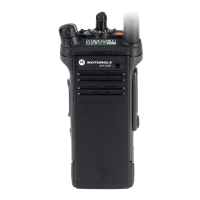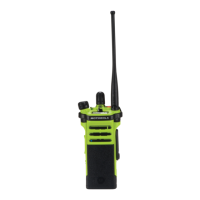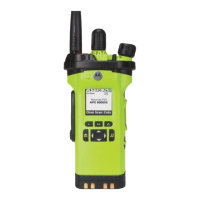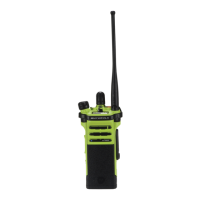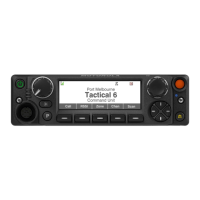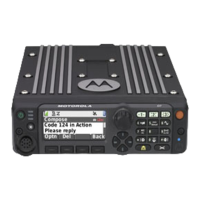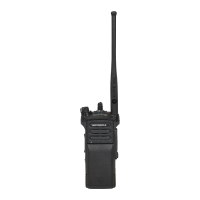Do you have a question about the Motorola APX 6500 and is the answer not in the manual?
Identifies the main control unit of the radio system and its components.
Explains the procedure for powering the radio on and off, including LED indicators.
Details how to increase or decrease the radio's audio volume using the volume knob.
Provides descriptions of various buttons, knobs, and their functions on the radio.
Covers methods for accessing radio features via buttons, menus, and programmable keys.
Explains the meaning of various icons displayed on the radio's liquid crystal display (LCD).
Details icons related to text messaging features and status on the radio display.
Describes the operational status indicated by the radio's Light Emitting Diodes (LEDs).
Explains how display backlight color changes indicate radio events and alerts.
Lists and describes the audio alert tones used by the radio for various conditions.
Describes how to select a group of channels for radio operation.
Explains the process of choosing a specific radio channel based on its characteristics.
Guides users on initiating voice communications with other radios.
Details the procedure for making calls to a group of users within a talkgroup.
Explains the ability to control multiple radio heads from a single transceiver unit.
Details scan list management, operation modes, nuisance channel handling, and HUB functionality.
Describes how to use the radio's emergency alarm and call functions for critical situations.
Explains radio operation and communication during trunked system failures.
Describes radio behavior and indicators when it loses system connection or range.
Details making and monitoring group announcements in trunked communication systems.
Explains radio behavior based on vehicle ignition state, including power management options.
Details audibly indicating current feature mode, zone, or channel for user convenience.
Describes switching between preprogrammed radio visual, audio, and setting configurations.
Explains how to adjust the radio's screen brightness and minimum backlight level.
Details the feature that turns off the radio's transmitter after a preset time limit.
Explains how radio IDs are displayed and transmitted during Push-to-Talk (PTT) operations.
Identifies the main control unit of the radio system and its components.
Explains the procedure for powering the radio on and off, including LED indicators.
Details how to increase or decrease the radio's audio volume using the volume knob.
Provides descriptions of various buttons, knobs, and their functions on the radio.
Covers methods for accessing radio features via buttons, menus, and programmable keys.
Explains the meaning of various icons displayed on the radio's liquid crystal display (LCD).
Details icons related to text messaging features and status on the radio display.
Describes the operational status indicated by the radio's Light Emitting Diodes (LEDs).
Explains how display backlight color changes indicate radio events and alerts.
Lists and describes the audio alert tones used by the radio for various conditions.
Describes how to select a group of channels for radio operation.
Explains the process of choosing a specific radio channel based on its characteristics.
Guides users on initiating voice communications with other radios.
Details the procedure for making calls to a group of users within a talkgroup.
Explains the ability to control multiple radio heads from a single transceiver unit.
Details scan list management, operation modes, nuisance channel handling, and HUB functionality.
Describes how to use the radio's emergency alarm and call functions for critical situations.
Explains radio operation and communication during trunked system failures.
Describes radio behavior and indicators when it loses system connection or range.
Details making and monitoring group announcements in trunked communication systems.
Explains radio behavior based on vehicle ignition state, including power management options.
Details audibly indicating current feature mode, zone, or channel for user convenience.
Describes switching between preprogrammed radio visual, audio, and setting configurations.
Explains how to adjust the radio's screen brightness and minimum backlight level.
Details the feature that turns off the radio's transmitter after a preset time limit.
Explains how radio IDs are displayed and transmitted during Push-to-Talk (PTT) operations.
| Digital Technology | P25 Phase 1 and Phase 2 |
|---|---|
| GPS | Yes |
| Bluetooth | Yes |
| Frequency Range | 136-174 MHz (VHF), 380-470 MHz (UHF Range 1), 450-520 MHz (UHF Range 2), 764-870 MHz (700/800 MHz) |
| Operating Temperature | -30°C to +60°C (-22°F to +140°F) |
| Encryption | AES, DES-OFB, DES-XL |
| Display | Color Display |
